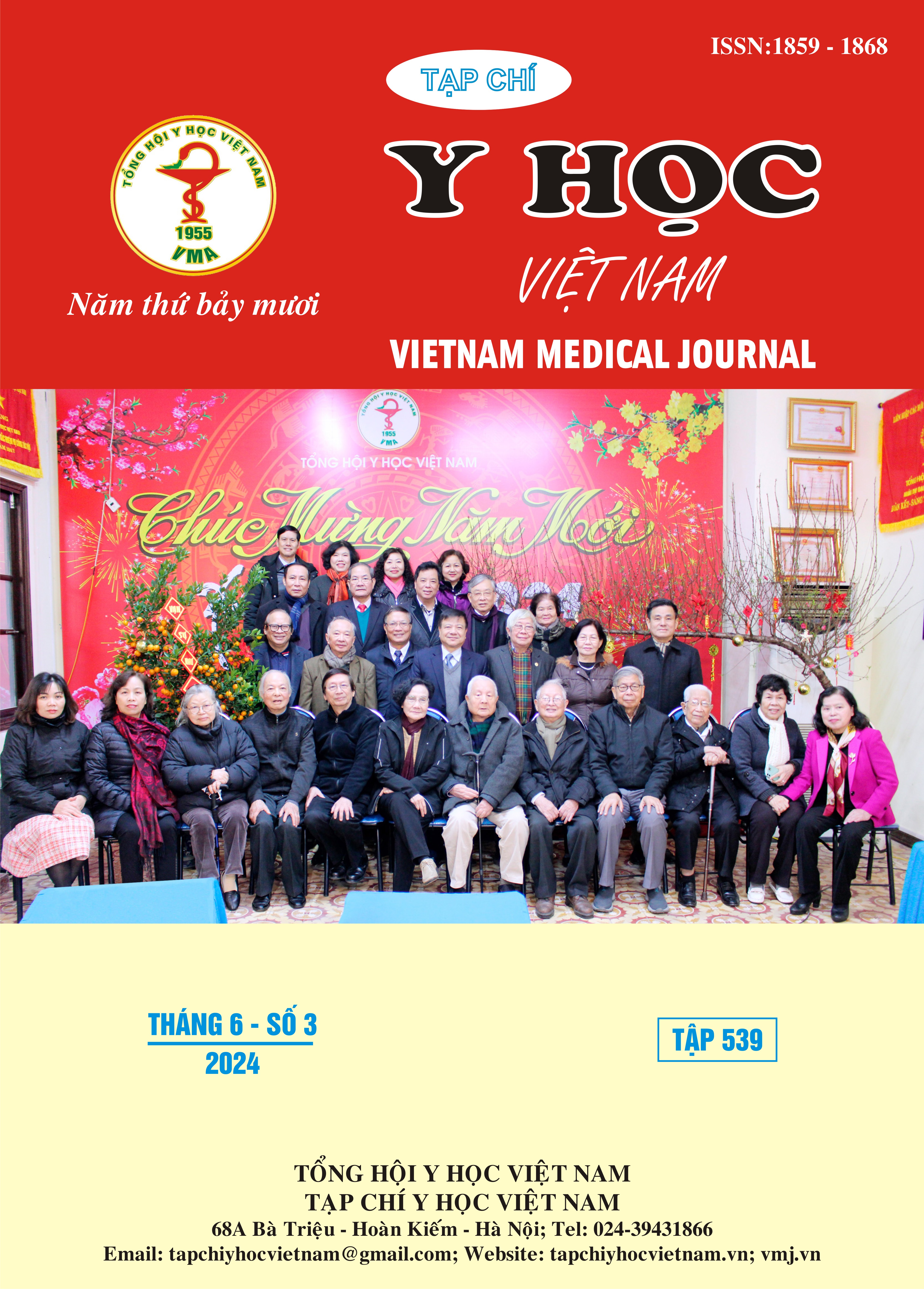HIỆU QUẢ VÀ AN TOÀN CỦA KỸ THUẬT HÚT U VÚ CÓ HỖ TRỢ ÁP LỰC ÂM DƯỚI HƯỚNG DẪN SIÊU ÂM TRONG CHẨN ĐOÁN VÀ ĐIỀU TRỊ TỔN THƯƠNG VÚ LÀNH TÍNH
Nội dung chính của bài viết
Tóm tắt
U vú lành tính nói chung và nhân xơ tuyến vú nói riêng là những tổn thương hay gặp, tuy nhiên đánh giá nguy cơ ác tính các tổn thương vú còn gặp nhiều khó khăn. Gần đây, kỹ thuật hút u vú có hỗ trợ áp lực âm dưới hướng dẫn siêu âm - vacuum-assisted breast biopsy (VABB) ngày càng được sử dụng rộng rãi để chẩn đoán và điều trị u lành tuyến vú. Mục tiêu nghiên cứu của chúng tôi là đánh giá hiệu quả và vai trò của kỹ thuật VABB tại Bệnh viện Đại học Y Hà Nội (ĐHYHN). Đối tượng và phương pháp nghiên cứu: Nghiên cứu (NC) mô tả cắt ngang được thực hiện trên 20 bệnh nhân (BN) có u vú đã có kết quả giải phẫu phẫu bệnh (GPB) là tổn thương lành tính, sau đó được sinh thiết trọn u và điều trị bằng kỹ thuật VABB tại Trung tâm Chẩn đoán hình ảnh và Can thiệp điện quang (CĐHA & CTĐQ), Bệnh viện ĐHYHN từ 01/2021 đến 04/2023. Kết quả: NC trên 20 BN cho thấy đường kính (ĐK) trung bình của tổn thương là 20,15mm (10-36 mm). Sau can thiệp, tỷ lệ loại bỏ hoàn toàn đạt được là 95% sau 3 và 6 tháng, tỷ lệ tái phát là 0%, không có sự tương quan giữa ĐK tổn thương và khả năng loại bỏ hoàn toàn tổn thương bằng kỹ thuật VABB (p=0,33). Tỷ lệ biến chứng sau can thiệp gồm tụ máu, đau, bầm tím lần lượt là 5%, 10% và 5%. Kết luận: Kỹ thuật VABB là phương pháp chẩn đoán và điều trị u vú lành tính hiệu quả, an toàn với tỷ lệ cắt bỏ hoàn toàn cao, ít tái phát và ít biến chứng.
Chi tiết bài viết
Từ khóa
vacuum, VABB, hút u vú có hỗ trợ áp lực âm dưới hướng dẫn siêu âm, u vú lành tính, nhân xơ tuyến vú, sinh thiết vú
Tài liệu tham khảo
2. Bennett IC, Saboo A. The Evolving Role of Vacuum Assisted Biopsy of the Breast: A Progression from Fine-Needle Aspiration Biopsy. World J Surg. 2019;43(4):1054-1061. doi:10. 1007/s00268-018-04892-x
3. Roknsharifi S, Wattamwar K, Fishman MDC, et al. Image-guided Microinvasive Percutaneous Treatment of Breast Lesions: Where Do We Stand? RadioGraphics. 2021;41(4):945-966. doi: 10.1148/rg.2021200156
4. Salazar JP, Miranda I, de Torres J, et al. Percutaneous ultrasound-guided vacuum-assisted excision of benign breast lesions: A learning curve to assess outcomes. Br J Radiol. 2019; 92(1094):20180626. doi:10.1259/bjr.20180626
5. Fine RE, Boyd BA, Whitworth PW, Kim JA, Harness JK, Burak WE. Percutaneous removal of benign breast masses using a vacuum-assisted hand-held device with ultrasound guidance. The American Journal of Surgery. 2002;184(4):332-336. doi:10.1016/S0002-9610(02)00951-0
6. Ding B, Chen D, Li X, Zhang H, Zhao Y. Meta analysis of efficacy and safety between Mammotome vacuum-assisted breast biopsy and open excision for benign breast tumor. Gland Surg. 2013;2(2):69-79. doi:10.3978/j.issn.2227-684X.2013.05.06
7. Li SJ, Hao XP, Hua B, Wang JD, Fan ZM. Clinical practice guidelines for ultrasound-guided vacuum-assisted breast biopsy: Chinese Society of Breast Surgery (CSBrS) practice guidelines 2021. Chin Med J (Engl). 2021;134(12):1390-1392. doi:10.1097/CM9.0000000000001508
8. Rageth CJ, O’Flynn EAM, Pinker K, et al. Second International Consensus Conference on lesions of uncertain malignant potential in the breast (B3 lesions). Breast Cancer Res Treat. 2019; 174(2):279-296. doi:10.1007/s10549-018-05071-1
9. Consensus Guideline on the Use of Transcutaneous and Percutaneous Ablation for the Treatment of Benign and Malignant Tumors of the Breast.
10. Vũ ĐG, Nguyễn KT, Trần TH, Trần TY, Đoàn THN. Đánh giá kết quả ứng dụng kỹ thuật sinh thiết vú có hỗ trợ hút chân không dưới hướng dẫn siêu âm trong chẩn đoán và điều trị tổn thương vú. VMJ. 2021;498(1). doi:10.51298/vmj. v498i1.132


